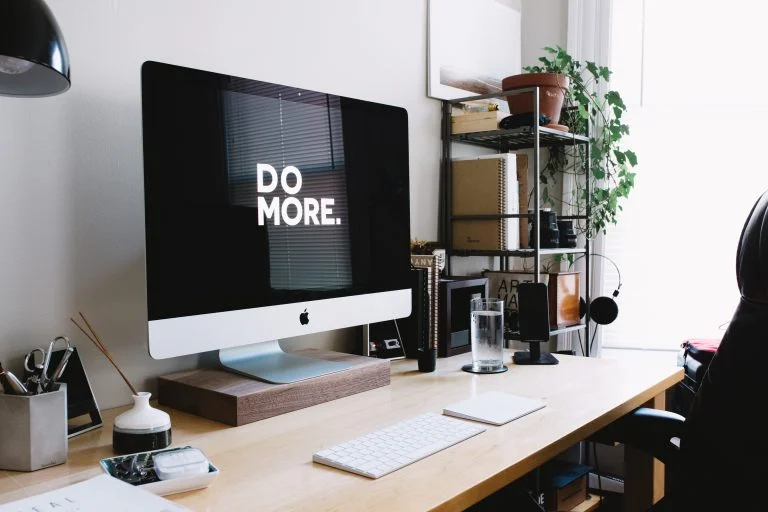What distinguishes UI design from UX design? Are UX and UI designers given distinct job descriptions? Here is the definitive comparison between UX and UI.
There are differences between UX and UI.
In essence: Person experience, or UX, refers to how a user is made to feel everytime they use a product or service. User interface, or UI for short, refers directly to the touchpoints a person uses to interact with a digital product.
What does that actually mean? To understand UX vs. UI better, keep reading.
UX vs. UI in a nutshell
Thinking on what each stands for will help you distinguish between UX and UI design.
User experience is referred to as UX. Every time a consumer interacts with a product or service, their user experience is affected. It’s the overall simplicity and user-friendliness of the encounter rather than anything concrete or physical.
User interface is referred to as UI. In relation to a digital product, such as a website or app, the user interface refers particularly to the screens, buttons, and other visual and interactive aspects that a person uses to engage with the product.
The thorough planning and creation of the user experience, together with everything it encompasses, is known as UX design. It prioritises developing a good or service that addresses a specific consumer need while ensuring the suggested solution is simple and fun to use.
Designing the appearance and functionality of digital interfaces is known as UI design. Everything from colours and font to buttons, scrolling features, animations, and more is covered in terms of the visual and interactive aspects of websites, programmes, and apps.
That’s a fundamental difference between the two. Let’s now examine UI and UX design in further detail.
What is UX design?
User concerns must be resolved in order to create experiences that are pertinent, simple, engaging, and accessible. It’s a broad field that evaluates how each component of a good or service that a user interacts with fits into the total to create a user-friendly experience.
Consider borrowing a book from your neighbourhood library. If everything goes as planned, you’re done in five minutes. You scan your membership card to gain entry, identify the area you’re searching for by following the extremely obvious signs, browse the alphabetically-arranged shelves to find the book you want, check it out using the self-checkout machine, and you’re off.
Let’s now consider a different case. When you get at the library, there is no option to scan your membership card, therefore you must stand in line to enter. You have no option but to wait as there is only one librarian on duty and they are now assisting a client. You eventually enter the library after waiting for ten minutes, only to discover that there are no signs directing you to the various areas. You return to the front desk and inquire about the location of the science fiction section. You ultimately find the correct area, but the shelves are disorganised.
There isn’t a system; all you can do is browse at random and hope for the best. You haven’t located your book after thirty minutes. You leave the library feeling frustrated and make a promise to never use it again.
The first library has been constructed and designed with the user experience in mind, but the second has not. The user is greatly affected, and their perception of the service as a whole is greatly impacted. The first library may anticipate delighted patrons who use it frequently, whereas the second can anticipate a steadily declining number of visitors. That is the significance and benefit of UX.
In order to create goods and services that are simple to use and fun to interact with, UX design constantly takes the end users’ demands into account. The UX design process entails conducting user research to understand the target user, defining the issue that needs to be solved, developing concepts for potential solutions, planning the layout of the good or service, taking into account all potential actions and steps the user might take, conducting tests to make sure the experience is accessible and intuitive, and iterating on the final product continuously.
That’s UX design—so what about UI?
What is UI design?
The appearance, feel, and behaviour of digital user interfaces fall under the umbrella of UI design, a particular facet of the total user experience.
UX design is applicable to practically everything that a person can come across or experience, as we showed with our library example. On the other side, UI design is solely concerned with digital screens and interfaces. A user interface serves as the point of contact between people and computers.
The objective of the UI design process is always to develop interfaces that are simple to use and enable the user to navigate from point A to point B without any interruptions. However, UI focuses on the style and arrangement of digital screens as well as the individual items they include, in contrast to UX, which is comprehensive and all-encompassing. This covers elements like menus, typography, images, colours, animations, and the transition from one screen to the next. It also incorporates swipe and scroll actions.
In our comprehensive overview of UI design, we go into further detail about this term.
UX vs. UI design: The main differences between the two
When designing a new hotel, the architect would think about the general function and layout of the establishment, asking crucial questions with the needs of the users in mind, like: What are we building? Why do we construct it? For whom are we creating it?
Following that, they would design the hotel’s structure and layout, giving close attention to how customers would navigate between the various rooms.
Once the architectural framework is in place, an interior designer will take over to furnish and decorate it. They would pay attention to everything from doors and door handles to towel rails and taps in the bathroom, as well as making sure the hotel looks good and exudes a certain vibe while also making sure the guests have access to all the functional elements they require to move around and use the hotel exactly as intended by the architect.
This is extremely similar to how UX and UI designers collaborate in spite of their differences. The UI designer is the interior specialist in charge of the ultimate appearance, feel, and functioning of the product’s interface, while the UX designer serves as the architect, taking into account a product’s whole experience.
With that in mind, we can summarise the main differences between UX and UI as follows:
UX is concerned with the user’s entire perception and experience as a whole. Both good and negative user experiences are intangible. Instead, they are the outcome of a service or product being overall obvious, intuitive, and easy to use as opposed to cumbersome, perplexing, and irritating. The design of the interfaces a person uses to interact with a digital product is the one very particular component of the entire experience that UI is concerned with.
Research, analysis, and a knowledge of user demands are important to user experience (UX). Although UI is similarly user-focused, its main focus is on interaction and visual design. While UX focuses more on problem-solving, UI unquestionably leans more toward the arts.
UX is a fairly wide phrase that encompasses all kind of human interactions and experiences, such as visiting a library to read a book, booking flights via a mobile app or website, or even visiting the dentist. Since user interfaces are the point of contact between people and computers, UI design is solely relevant to digital goods and experiences.
Job descriptions for UI designers versus those for UX designers
Examining the differences in the job descriptions for UX and UI designers is a wonderful approach to distinguishing between the two types of design.
Job descriptions for UX designers
The following duties, obligations, and specifications are frequently listed in the job description for a UX designer.
UX designer tasks and responsibilities:
- Investigate user behaviour and customer demands in-depth; carry out usability testing and user research; and make sure all designs adhere to business and user requirements.
- Storyboards, user flows, wireframes, and prototypes are examples of design deliverables that illustrate user experiences.
- You should also collaborate with partner teams to get feedback, iterate, and implement design solutions.
- Finally, you should stay current with market trends and competitor products.
UX designer skills and requirements:
- A suitable degree in design or a field linked to design (or similar professional experience)
- Proficiency in industry-standard UX design tools including Figma, Sketch, and Adobe XD
- Excellent problem-solving abilities and a grasp of user experience and interaction design
- Strong interpersonal connections skills; excellent communication and presentation abilities; and
- A strong UX portfolio
UI designer job descriptions
The UI designer job description often places a greater emphasis on visual and interactive design expertise than the UX designer job description does.
UI designer tasks and responsibilities:
- Contribute significantly to the brand’s creative expression across a variety of goods and channels.
- Collect and assess user needs with the help of UX designers, product managers, and engineers.
- Create graphic user interface elements and components.
- Build page navigation buttons and search fields.
- Use storyboards, process flows, and sitemaps to illustrate design ideas.
- Create UI mock-ups and prototypes that clearly show how sites will look and function.
- Implement layout changes based on feedback.
- Assist in creating and maintaining a UI style guide.
UI designer skills and requirements:
- Demonstrated ability to work as part of a highly collaborative team
- Knowledge of interaction design and UX principles
- Understanding of typography and colour theory
- Excellent communication and storytelling skills
- A relevant degree in graphic design, UI design, visual communication, or another design-related discipline
- Excellent attention to detail
UX vs. UI design: Which should you learn?
The ability to grasp UI and UX is incredibly valuable. Both are essential to the design and creation of digital goods, and neither is conceivable without the other.
You could wish to master both UX and UI if you want to develop into a multi-skilled designer who can manage the product design process from beginning to end. Consider concentrating in UX design if you’re more interested in user research, problem-solving, and product architecture. You could lean more toward UI if you’re a visual person who likes to design the finer aspects and guarantee that digital products are both appealing and user-friendly.

